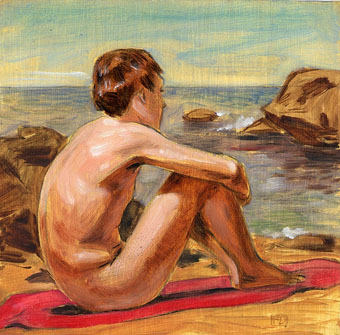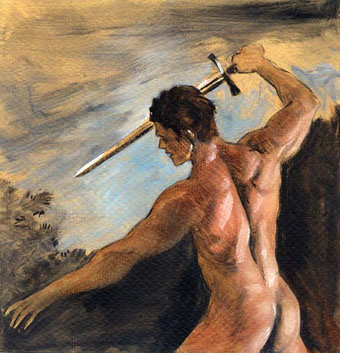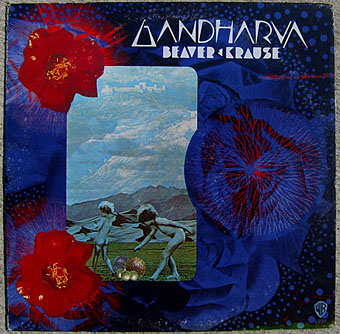Category: {art}
Art
The recurrent pose 26
Beach Day.
Two new archive additions for the price of one today via artist and photographer Felix D’Eon. These are from his Flickr pages but there’s more work on his website, from sketches to scenes of dreamy homoerotica.
Man with Sword.
Elsewhere on { feuilleton }
• The gay artists archive
• The recurrent pose archive
• The men with swords archive
Previously on { feuilleton }
• Felix D’Eon
The art of Motohiko Odani
Erectro (clara) (2004).
From Alice in Wonderland to something in a similar, if freakier, vein. Unlike many contemporary artists, Odani doesn’t do the same thing over and over, there’s a very varied selection of work at the Yamamoto Gendai gallery. Many of the other artists there are also worth a look, the Peter Max-like pictures by Yayoi Deki many even be called (yes, that word again…) psychedelic.
Gandharva by Beaver & Krause
I mentioned Wilfried Sätty’s collage work last week and this album sports one of his few cover designs. A cult object for several reasons, not least Sätty’s involvement. The title lettering was by fellow psychedelic artist David Singer who I had the good fortune to meet in California in 2005 whilst researching Sätty’s career. That chunky Seventies lettering style now looks distinctly contemporary having come back into fashion over the past couple of years.
Beaver & Krause were among the pioneers of Moog-based electronic music in the 1960s and notably provided the throbs and drones which Jack Nitzsche mixed into the soundtrack for Donald Cammell & Nicolas Roeg’s Performance. Gandharva was released in 1971 and one of the few all-electronic pieces on the album, Nine Moons in Alaska, is an outtake from those sessions. The first side is very uneven, with a blues jam and a gospel piece that don’t sit well with each other, never mind with the Moog tracks. Side two, however, is a far more successful suite of improvisations with organ, electronics, guitar, harp and saxophone (played by Gerry Mulligan) recorded live in Grace Cathedral, San Francisco.
Cover photo from the Psychedelic Music Flickr pool which features many fine examples of cover design from the late Sixties on.
Elsewhere on { feuilleton }
• The illustrators archive
Elsewhere on { feuilleton }
• The album covers archive
Previously on { feuilleton }
• Ginsberg’s Howl and the view from the street
• Further back and faster
• Quite a performance
• Borges in Performance
The art of Anthony Goicolea
Premature (2003).
It’s difficult to avoid the word “dreamlike” when looking at Anthony Goicolea‘s carefully-staged tableaux, all of which use the artist himself as their subject, redressed and multiplied by Photoshop into an army of clones. The artist-as-model isn’t a new thing—Cindy Sherman has been doing this for years—but the possibilities of digital manipulation still seem rather under-explored in the contemporary art world; whether that’s down to a lack of the necessary aptitude on the part of artists or simply avoidance of a medium more commonly associated with advertising and illustration is hard to say.





